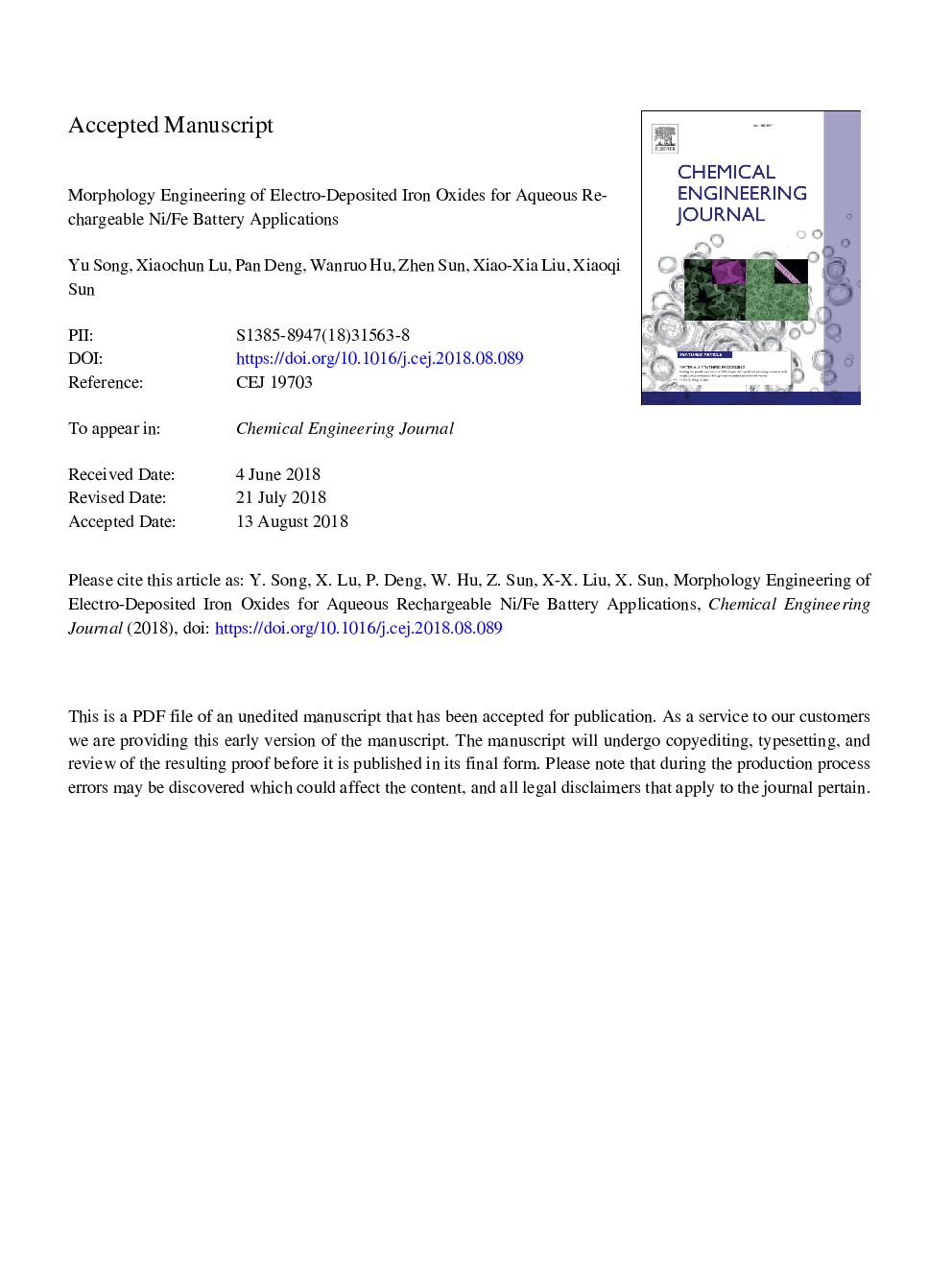| Article ID | Journal | Published Year | Pages | File Type |
|---|---|---|---|---|
| 11000231 | Chemical Engineering Journal | 2018 | 23 Pages |
Abstract
Aqueous rechargeable Ni/Fe batteries possess potential advantages for large-scale energy storage applications due to their low cost, high safety and fast ion diffusions in electrolyte. However, the electrochemical performance of the iron-based anode is still far from ideal due to particle aggregations. Herein, we carry out the morphology engineering on the iron oxide active materials via a facile electrochemical method to improve its charge storage capability. The morphology transition from zero-dimensional particles to one-dimensional nanorods is realized by tuning the electrolyte composition, while subsequent annealing treatment results in further morphology modification into 3D interconnected nanoparticles (10-20â¯nm). The hierarchical structure allows facile ion and electron transfers, and the large surface provides various active sites for the charge storage conversion reaction. As a result, even at the high current density of 2â¯Aâ¯gâ1 (â¼6C rate), the iron oxide electrode can still deliver a high specific capacity of 184â¯mAhâ¯gâ1. At the same time, the morphology integrity and stability of the electrode leads to a good cycle life, with 87.5% capacity retained upon 5000 cycles. The Ni/Fe full cell assembled with the iron oxide anode and a Ni-Co double hydroxide cathode exhibits a good energy density of 82.3â¯Whâ¯kgâ1 at the power density of 3.3â¯kWâ¯kgâ1. Our fundamental study would provide new insights for the electro-deposition of iron-based materials and endow new opportunities for the fabrication of high-performance iron-based electrodes for energy storage systems.
Related Topics
Physical Sciences and Engineering
Chemical Engineering
Chemical Engineering (General)
Authors
Yu Song, Xiaochun Lu, Pan Deng, Wanruo Hu, Zhen Sun, Xiao-Xia Liu, Xiaoqi Sun,
